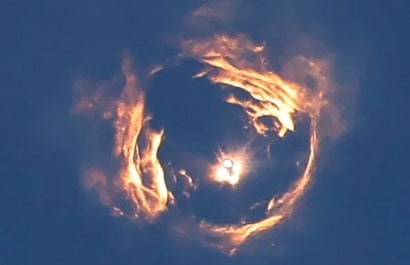Now Reading: Analyzing Materials for Energy-efficient Technologies
-
01
Analyzing Materials for Energy-efficient Technologies
Analyzing Materials for Energy-efficient Technologies

Researchers at the Department of Energy’s Oak Ridge National Laboratory have developed a new technique that lets scientists see — in unprecedented detail — how interfaces move in promising materials for computing and other applications. The method, now available to users at the Center for Nanophase Materials Sciences at ORNL, could help design dramatically more energy-efficient technologies.
Data centers today consume as much energy as small cities, and that usage is skyrocketing. To counter the trend, scientists are studying exotic materials such as ferroelectrics that could store and process information far more efficiently than silicon, which is traditionally used. But realizing the potential depends on understanding the processes occurring at dimensions thousands of times smaller than a human hair — specifically, at the ferroelectric material’s domain walls, which are the boundaries between areas of the material that exhibit different magnetic or electric properties.
“Domain walls can have completely different properties from the neighboring domains they separate,” said ORNL’s Neus Domingo. “Some might conduct electricity — despite the bulk material being nonconductive — while others show magnetic behavior despite the surrounding material being nonmagnetic. These differences matter because they may enable us to use them as new nanoelectronic components to store and process signals at the tiniest scales, which is key for developing next-generation low-power devices such as memory chips and sensors.”
Understanding and controlling the behavior of such domain walls without this new technique is like trying to coach a football game from just two still shots: one showing the quarterback lined up before the snap, and another capturing the moment after the play has ended. Without knowing the events in between, it is much more difficult to know whether the play was a run or a pass, which players were critical or what effort led to the result. Improving how the team plays requires being able to see all the action.
“The method fills in crucial gaps by creating dynamic visualizations that allow scientists to observe how domain walls move and better estimate how much energy is required to shift them. It turns a static snapshot into a vivid, explanatory sequence,” said ORNL’s Stephen Jesse. “Using precisely timed measurement and control electronics, we can rapidly and systematically change the state of a ferroelectric material and watch how changes evolve over time. Until now, this level of detail has not been achieved using atomic force microscopy, and the method can be adapted for use in electron microscopes and other advanced instruments.”
The technique captures both the tiny, repeated movement of domain walls as they react to changes in their environment — such as electric or mechanical signals — and the sudden, stop-and-go movements that happen when the walls are briefly stuck and then abruptly shift, like a door sticking before it swings open.
These patterns of motion, both smooth and jerky, reveal how ferroelectric polarization is modified within the material. Ferroelectric polarization is the natural alignment of electric charges in certain materials that can be changed by an external electric field, and this ability is crucial for applications such as memory storage and sensors.
The researchers aim to further refine this technique to study other materials and collaborate with industry partners to explore potential commercial applications.
Abstract
Understanding ferroelectric domain wall dynamics at the nanoscale across a broad range of timescales requires measuring domain wall position under different applied electric fields. The success of piezoresponse force microscopy (PFM) as a tool to apply local electric fields at different positions and imaging their changing position, together with the information obtained from associated switching spectroscopies has fueled numerous studies of the dynamics of ferroelectric domains to determine the impact of intrinsic parameters such as crystalline order, defects and pinning centers, as well as boundary conditions such as environment. However, the investigation of sub-coercive reversible domain wall vibrational modes requires the development of new tools that enable visualizing domain wall motion under varying applied fields with high temporal and spatial resolution while also accounting for spurious electrostatic effects. Here, scanning oscillator piezoresponse force microscopy extends the investigation of domain wall dynamics to new regimes, providing direct visualization of domain wall position as a function of an external electric field that varies in time and location. This enables studying the energetics of field-driven ferroelectric domain wall motion, which is shown to obey a thermally activated flow regime in the millisecond timescale

Brian Wang is a Futurist Thought Leader and a popular Science blogger with 1 million readers per month. His blog Nextbigfuture.com is ranked #1 Science News Blog. It covers many disruptive technology and trends including Space, Robotics, Artificial Intelligence, Medicine, Anti-aging Biotechnology, and Nanotechnology.
Known for identifying cutting edge technologies, he is currently a Co-Founder of a startup and fundraiser for high potential early-stage companies. He is the Head of Research for Allocations for deep technology investments and an Angel Investor at Space Angels.
A frequent speaker at corporations, he has been a TEDx speaker, a Singularity University speaker and guest at numerous interviews for radio and podcasts. He is open to public speaking and advising engagements.






















